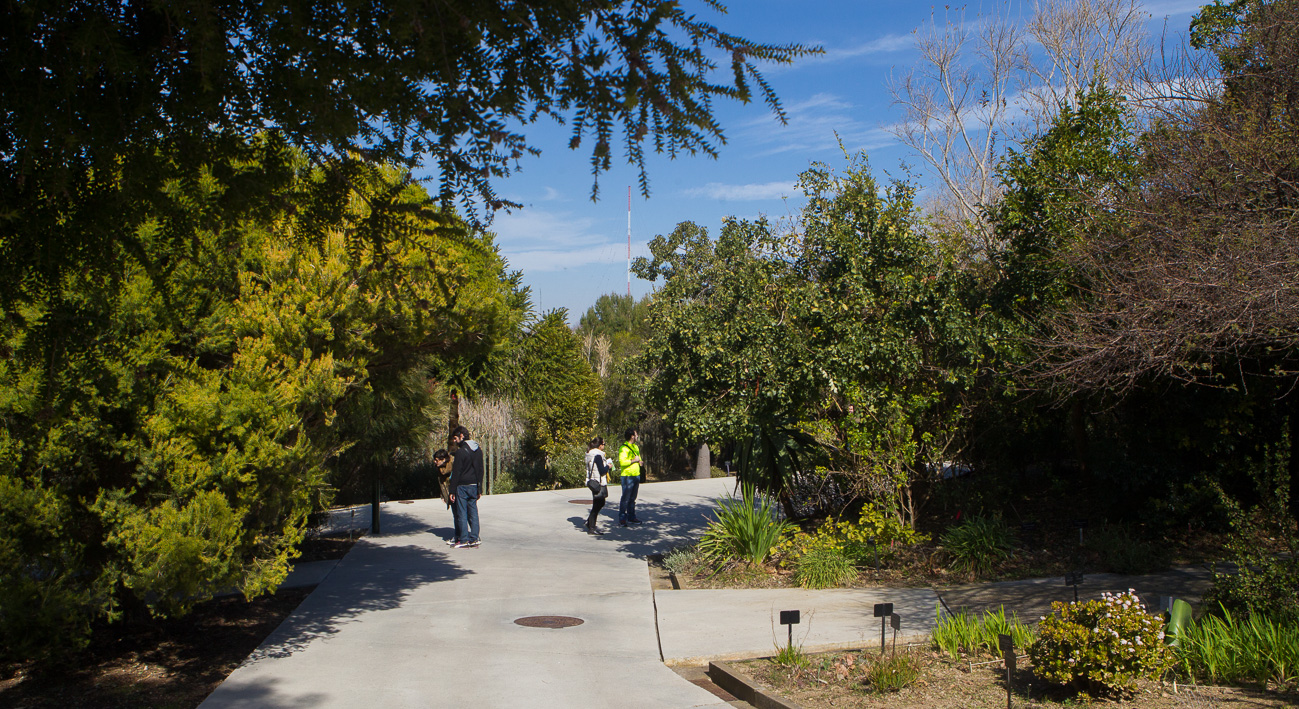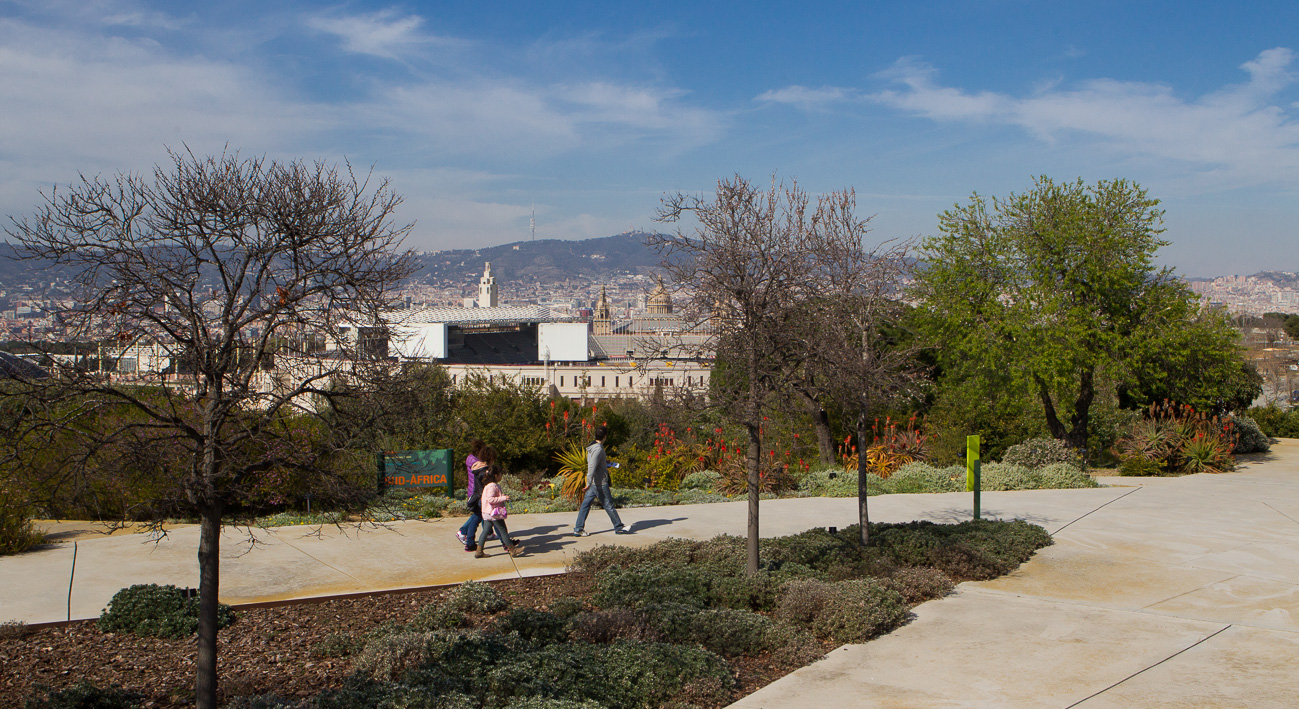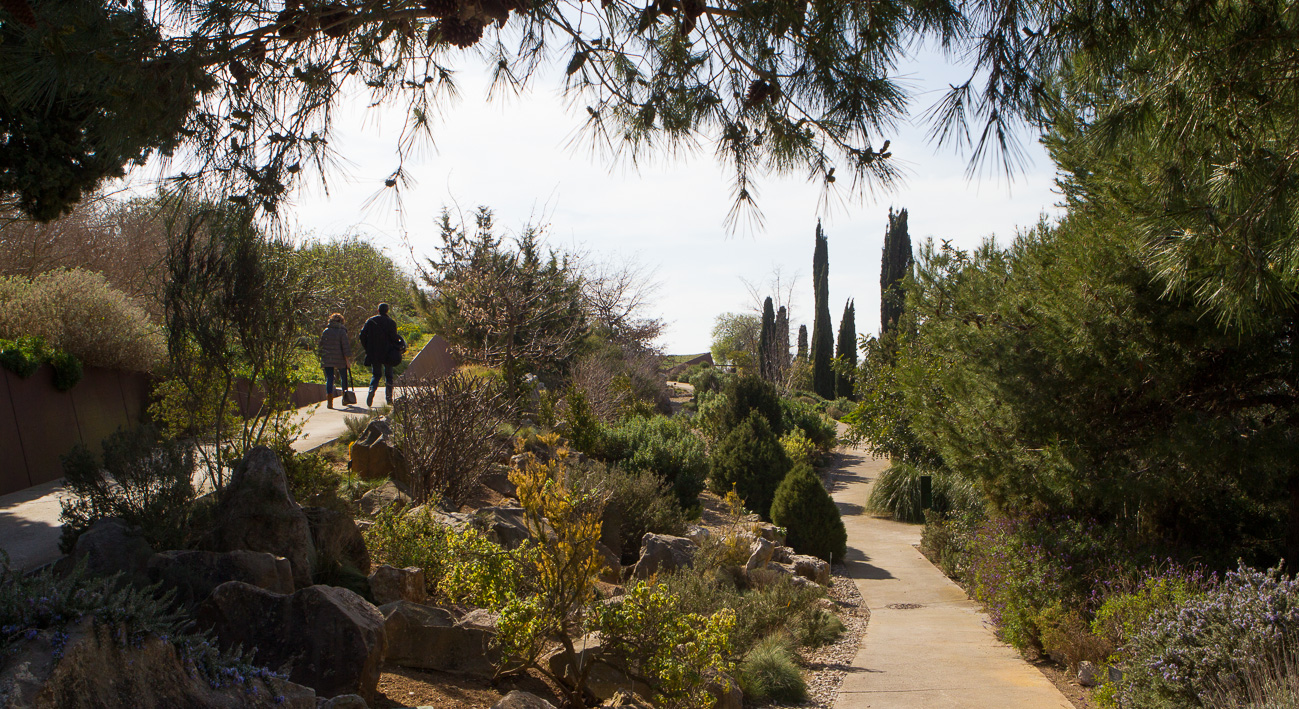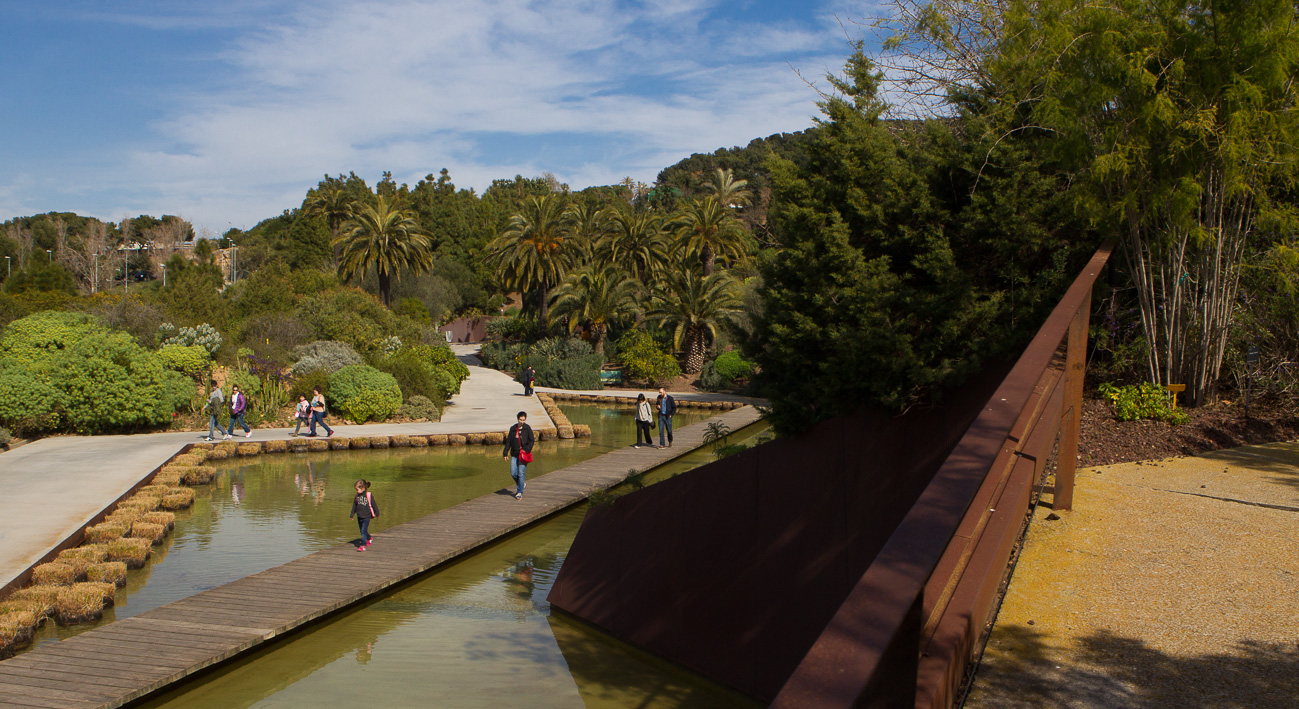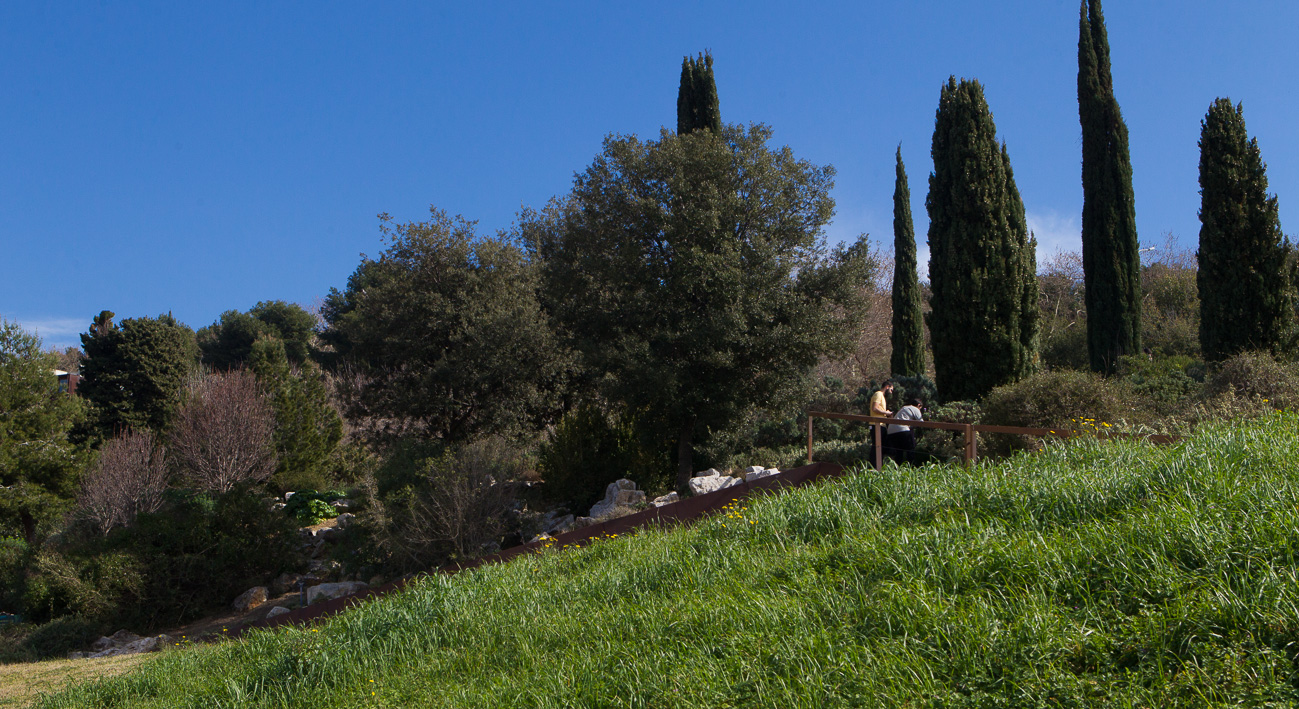Jardí Botanic - Museu de Ciències Naturals de Barcelona
Carrer del Doctor Font i Quer, 2
To fit in with modern times and meet scientific and sustainability criteria, the Botanical Garden has moved on from collecting exotic plants and botanical rarities – an activity typical of the natural science museums of the 18th and 19th centuries – and adopted a more scientific approach that follows sustainability criteria.

History
A variety of spaces have acted as botanical gardens and been opening in the city. The first botanical gardens in Spain opened in Sant Joan Despí, in 1850, and the first in Barcelona on the Rambla, ten years later. Other spaces that have played this role include the ones that the Marquis of Ciutadilla created near the Sant Pau del Camp monastery, in the Raval, the University gardens and the old botanical garden, designed by Pius Font i Quer on the site of the old Foixarda quarries on Montjuïc. These gardens are still open to the public as historical gardens. Today’s Botanical Garden, which is also on Montjuïc, is located between the castle and the Lluís Companys Olympic Stadium.

Art and Architecture
The architects Carles Ferreter, Josep Lluís Canosa, Beth Figueres, Artur Bossy and Joan Pedrola are the creators of these plant scenarios or phyto-episodes. They are organised to make the most of the Montjuïc’s slopes and combine the triangular plots of land we find throughout the route. The triangles are distributed in a way that takes advantage of the various possible orientations towards the sun and in the light. Always in line with the needs of the plant species found there.
Timetable
| Periode | Dies | Hores | Preus |
|---|---|---|---|
| de l'1 de novembre al 31 de gener |
Tots els dies i festius Tancat 25 de desembre i 1 de gener |
de 10:00 h a 17:00 h | Entrada general: 5 € Combinada Museu de Ciències Naturals+Jardí Botànic: 8 € Reduïda: 2.50 € - Persones de 16 a 29 anys - Majors de 65 anys - Famílies, mínim un membre menor de 16 anys - Aturats - Carnet família nombrosa - Carnet família monoparental - carnet de Biblioteques de Barcelona - posseïdors de la targeta rosa reduïda Grups (+ 10 persones): 1.70 € Gratuïta: - Els diumenges des de 15 h fins a l'hora de tancament - Primer diumenge de mes - Registrats al programa Gaudir+BCN - Amics del Jardí Botànic - Amics del Museu de Ciències - Menors de 16 anys - Carnet de l'ICOM - Socis Associació Museòlegs de Catalunya - Professors ensenyament reglat acreditats per la direcció - Professors amb grups d'alumnes - Targeta rosa gratuïta - Passi metropolità d'acompanyant discapacitat - Periodistes acreditats - Guies turístics professionals - Targeta BCN Card - 12 febrer (Santa Eulàlia) - 18 de maig (Dia Internacional dels Museus) - 24 de setembre (Festes de la Mercè) |
| de l'1 de febrer al 31 de març |
Tots els dies i festius | de 10:00 h a 18:00 h | |
| de l'1 d'abril al 31 de maig |
Tots els dies i festius Excepte 1 de maig |
de 10:00 h a 19:00 h | |
La Nit dels Museus 2025: 17 de maig |
de 19.00 h a 01.00 h | Entrada Gratuïta |
|
De l'1 juny al 31 agost |
Tots els dies i festius Excepte 24 de juny |
de 10:00 h a 20:00 h | Entrada general: 5 € Combinada Museu de Ciències Naturals+Jardí Botànic: 8 € Reduïda: 2.50 € - Persones de 16 a 29 anys - Majors de 65 anys - Famílies, mínim un membre menor de 16 anys - Aturats - Carnet família nombrosa - Carnet família monoparental - carnet de Biblioteques de Barcelona - posseïdors de la targeta rosa reduïda Grups (+ 10 persones): 1.70 € Gratuïta: - Els diumenges des de 15 h fins a l'hora de tancament - Primer diumenge de mes - Registrats al programa Gaudir+BCN - Amics del Jardí Botànic - Amics del Museu de Ciències - Menors de 16 anys - Carnet de l'ICOM - Socis Associació Museòlegs de Catalunya - Professors ensenyament reglat acreditats per la direcció - Professors amb grups d'alumnes - Targeta rosa gratuïta - Passi metropolità d'acompanyant discapacitat - Periodistes acreditats - Guies turístics professionals - Targeta BCN Card - 12 febrer (Santa Eulàlia) - 18 de maig (Dia Internacional dels Museus) - 24 de setembre (Festes de la Mercè) |
| de l'1 de setembre al 31 d'octubre |
Tots els dies i festius | de 10:00 h a 19:00 h |
El Jardí Botànic també anomenat "Nou Jardí Botànic", forma part del conjunt museístic del Museu de Ciències Naturals.
Situat a la vessant septentrional de la muntanya de Montjuïc, entre l'Estadi i el Castell.
Com arribar: Metro fins a pl. Espanya. Aquí s'agafa el 50. Es baixa a la parada de l'Estadi Olímpic. Se segueix caminant per la vorera de l'Estadi Olímpic en la mateixa direcció que ens ha deixat l'autobús. Es tomba el primer carrer a la dreta (és direcció a Zona Franca). Per aquest carrer, que va deixant l'Estadi Olímpic a la dreta, es continua fins arribar al primer encreuament de carrers. Just aquí, a l'altra banda de la carretera i davant nostre hi ha l'àmplia rampa d'entrada al Jardí Botànic per taquilles.
Jardí instal:lat en un terreny de 14 ha., darrera l'Estadi Olímpic, on si troben les principals espècies de les cinc regions del món amb clima mediterrani,agrupades d'acord amb llur procedència i afinitat ecològica.
Inauguració: 18/04/1999.
Esdeveniments
-
Joc 'Em roda el cap!'
From 01/10/2025 to 31/12/2025
-
Visita guiada 'Jardí Botànic'
Permanent event
-
'My head is spinning' clue game
Permanent event
-
Mostra de Bonsai
Permanent event
-
Curs monogràfic 'Viatges per les mediterrànies del Jardí Botànic'
From 07/10/2025 to 05/06/2026

